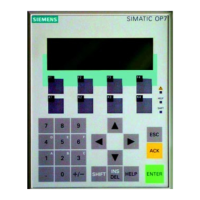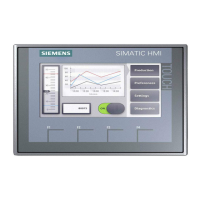10.4.3 Archive configuration for AlarmLogging
Calculation
Unlike with TagLogging, messages occur as events and you must make assumptions,
for example, as regards an average message load which is continuously present. These
assumptions can differ from one another considerably, depending on the technology/sector in
question.
In practice, however, you can also proceed in another way, by calculating the TagLogging
requirement and adding the available, unused hard disk memory space to the AlarmLogging
database. This would then become the specification for the maximum size of all segments.
The memory requirements are generally calculated as follows:
Number of messages/s * 4 KB/message * 60 s/min * 60 min/h * 24 h/day * 31 days/month
* y months
Example
You assume that the number of events in your plant is 1 message/s.
● The maximum size for all segments is calculated as follows:
approx. 20 GB
(1 message/s * 4,000 bytes/message * 60 s/min * 60 min/h * 24 h/day * 31 days/month
* 2 months)
● The following is calculated for a single segment per day:
approx. 330 MB
(1 message/s * 4,000 bytes/message * 60 s/min * 60 min/h * 24 h/day * 1 day)
Deliberately set this limit higher so that you can still achieve a daily swap-out even if a
message burst occurs. In our example, we have selected 700 MB.
Note
As a rule, no more than 200 single segments (for the TagLogging Fast/Slow and
AlarmLogging archive databases) may be generated in total.
You must then make the following settings in the "AlarmLogging" editor:
Configuring OS functions
10.4 Archiving
Compendium Part A - Configuration Guidelines (V8.2)
256 Configuration Manual, 08/2016, A5E38166869-AA

